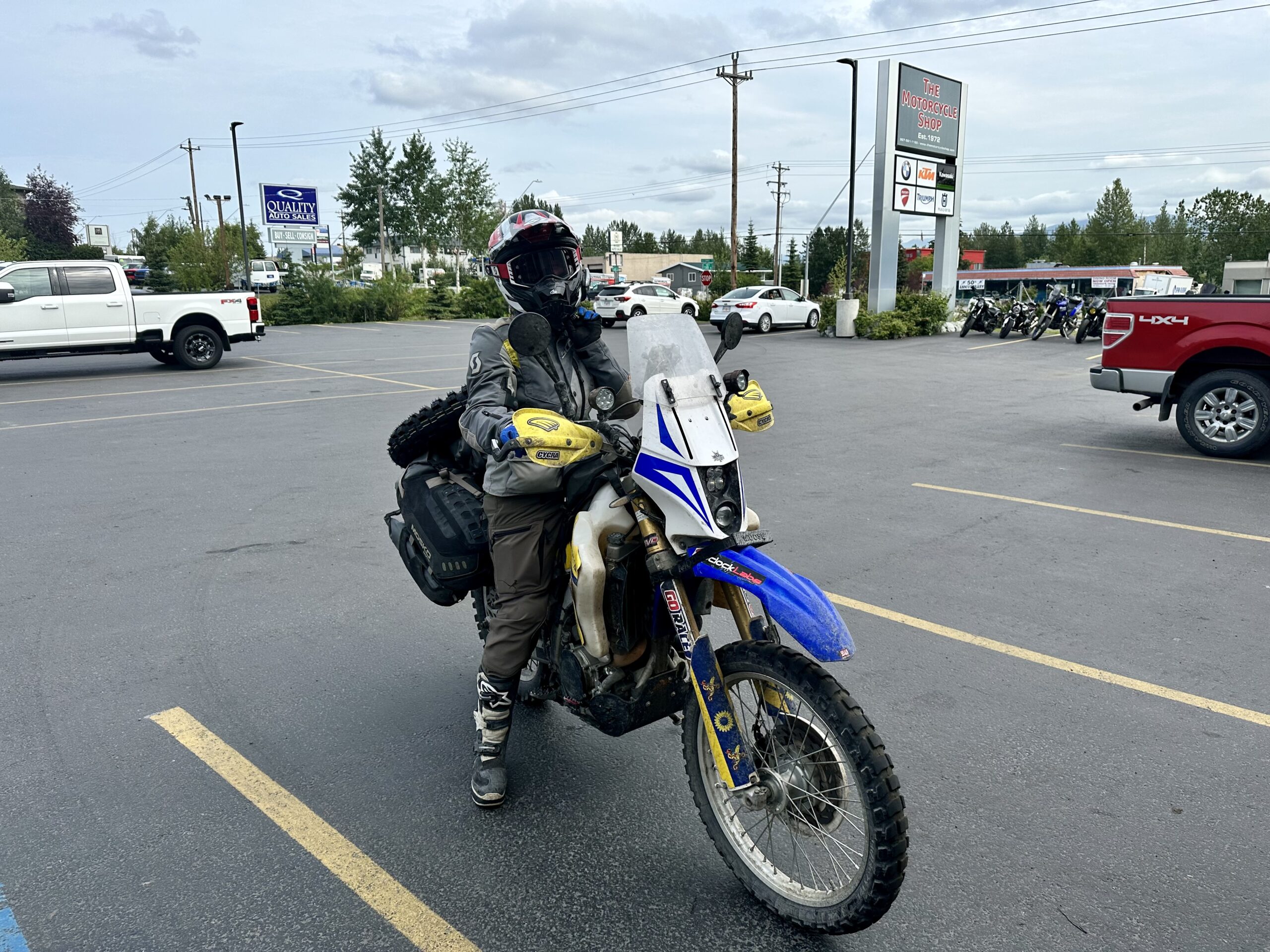After the hectic Manila, we found ourselves in Palawan, an island with a more rural pace of life. Standing in the hot afternoon sun we were debating which pair of the scooters available for rent from a shop in Puerto Princesa were the least bad. Worn brakes, bald tires, poor suspension – hey, $7 a day only gets you that far. They all came with phone mounts for navigation, so there was that. The shop owner wanted us to leave our passports as deposit, at which I laughed a little. We settled on a small cash deposit instead.
It was only 35 km to our hotel in the middle of the jungle, but it felt much longer. Puerto Princesa is a rather populated and spread out town, and the road rules there were… different, and it took some time to adapt. Out in the countryside the numerous speed bumps quickly proved that long distance travel on these scooters was going to be problematic. Compared to the custom suspension of our dual sports, this was pain inducing. Nonetheless, it was way better than not having our own wheels at all.
The next day we had a proper road trip – to a coastal village of Sabang, to check out Palawan’s iconic subterranean river. The route was a delight, passing mountains, beaches, rice paddies, grazing cattle and finally culminating with a busy market stalls along Sabang Beach.
The Puerto Princesa Subterranean River is generally a group activity. The first step is to get to the cave entrance, which is only accessible by water. One could hire a private boat, but we had no trouble finding a group to split the costs. It’s all very organized, the boat crews get a set fee for the trip, all boats depart in order, like taxis in an airport, and it makes the process very transparent and easy for tourists.
Speaking of the boats, virtually all of them were the double outriggers that are prevalent in Maritime Southeast Asia. With the stability of the outriggers, the skinny boats were fearlessly going full blast in the rough sea.
At the cave entrance we donned hard hats and sat in a 5-passenger canoe, which was manually operated by a single guide. His job did not involve much talking, because to preserve the eerie quiet of the underground river everyone was requested to stay silent. An earpiece with an audio guide was provided in a variety of languages, but every once in a while it was cool to remove it and enjoy the silence of the cave. Several species of bats live inside, and their quick flybys were a fun contrast to the mellow motion of the canoe. That’s another, more attractive reason to keep your mouth shut. Guano is a great fertilizer but not a great snack.
The stalactite and stalagmite formations in the cave were immense, and in the dim light the shadows played their tricks. The enthusiasm from the audio guide on what each piece resembled, whether it was a famous artist, religious symbol or a vegetable, brought on a very important question. What kind of hallucinogens grow in the area and why did this feel like I was failing an ink blot test.
As we reemerged into the sunlight, everything seemed more peaceful and subdued.
I have heard this experience can be tainted by too many tourists resulting in too much waiting, but we found it was actually the crews waiting to get enough clients more often than not. They asked us to tell others about the river, so they can get more visitors. Go figure.
We headed back on a fast boat to Sabang, where we had lunch, got back on our scooters, and leisurely rode back through the countryside. As we passed a picturesque limestone cliff along the way, I couldn’t stop wondering if there was a secret cave system inside it, too.






































